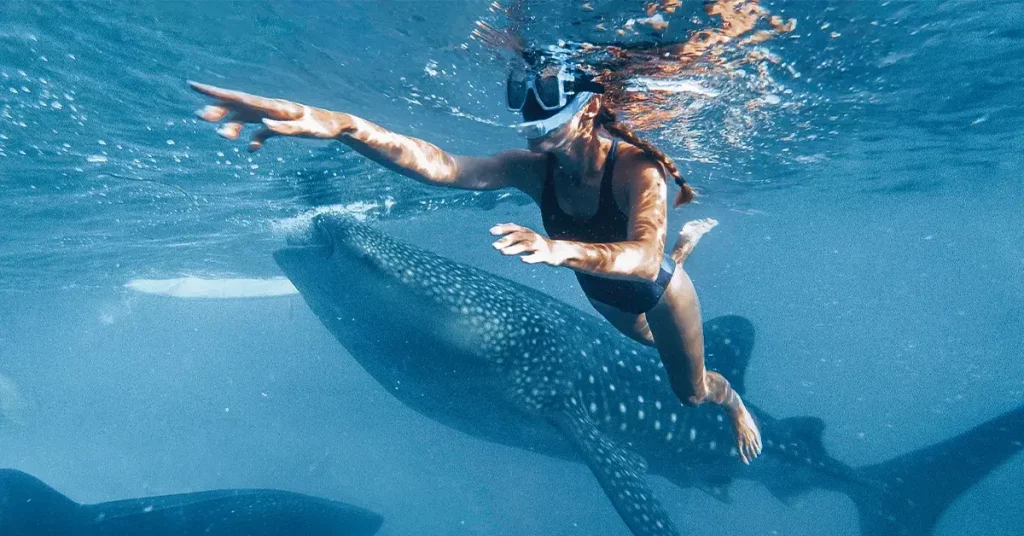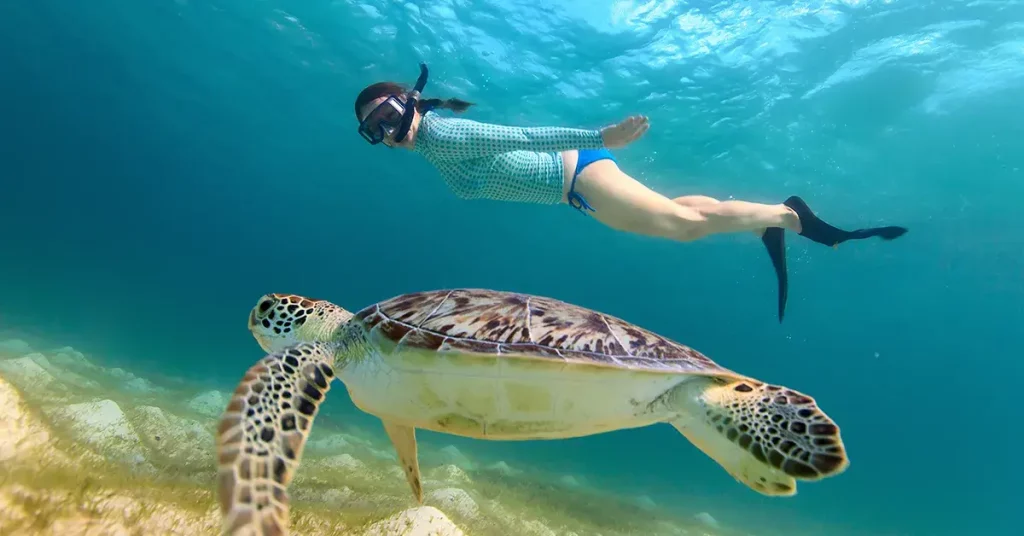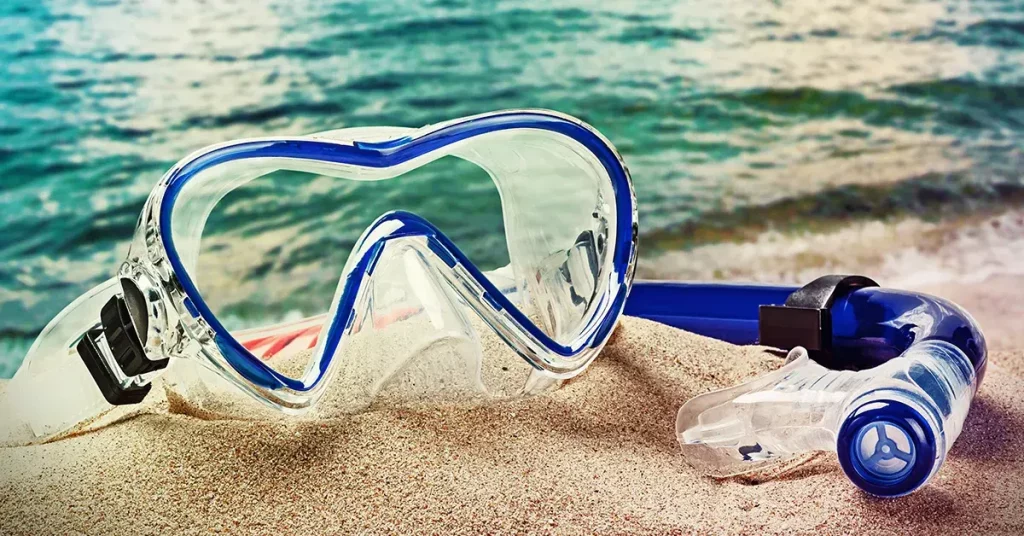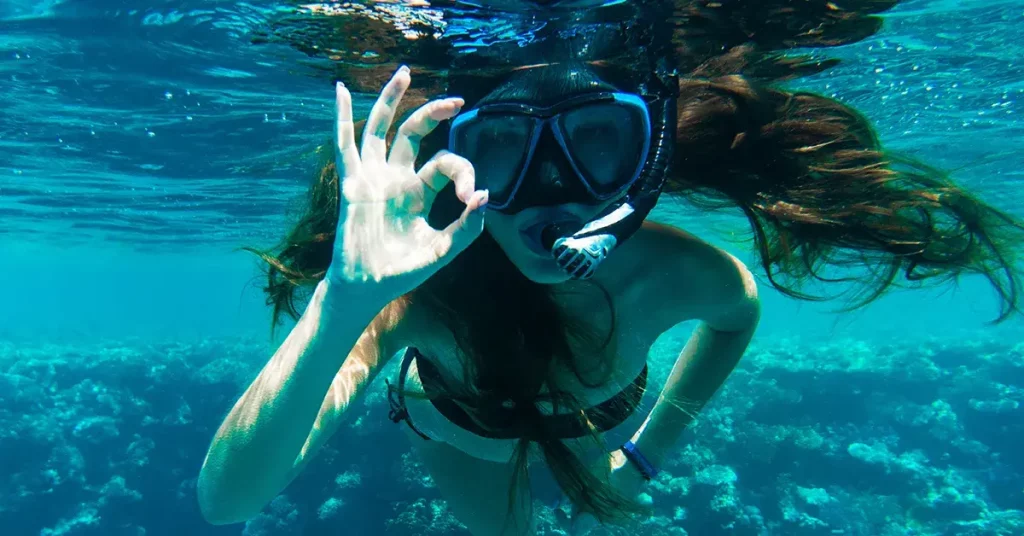Did you know there are about 400 species of sharks? From the Basking Shark to the deep-sea Frilled Shark, these friends are one of the most diverse species. With so many different types, it’s natural to wonder how to be safe snorkeling around sharks and want to avoid shark encounters.
If you’re concerned for your safety around sharks, we’re here to help. Read on for some crucial information on how to be safe snorkeling around sharks.
Proper Equipment

One of the first things you should keep in mind is proper equipment which includes bringing the right things for your snorkel but ensuring you don’t bring the wrong things.
For example, ensure nothing in your pockets might attract a shark or another sea critter. Idly forget some bait in your pocket, or put a sealed snack in for later? These items can attract a shark and more.
If you bring something like this, your chance of being hurt by a shark is much higher. Instead, wear the proper equipment. A wetsuit won’t protect you from harm, but it’s another layer, and many come in patterns that can help shoo away sharks.
You could also consider bringing something for self-defense. A knife or something to repel sharks in the worst-case scenario is never a bad idea to have.
Know the Time
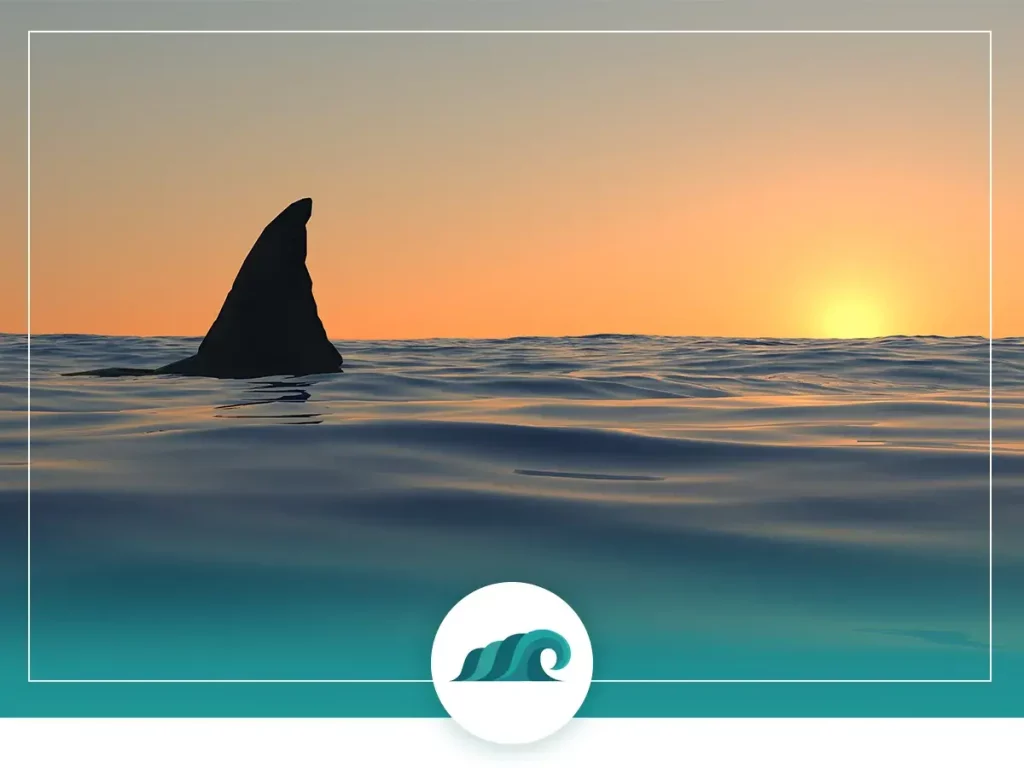
Did you know that sharks are the most active during sunrise and sunset? Dusk and dawn are the two primary hunting times for sharks.
You can still find sharks at other times, but snorkeling with sharks during mid-day can considerably lower your chance of encountering a shark if you avoid snorkeling during these hours.
Know Your Sharks
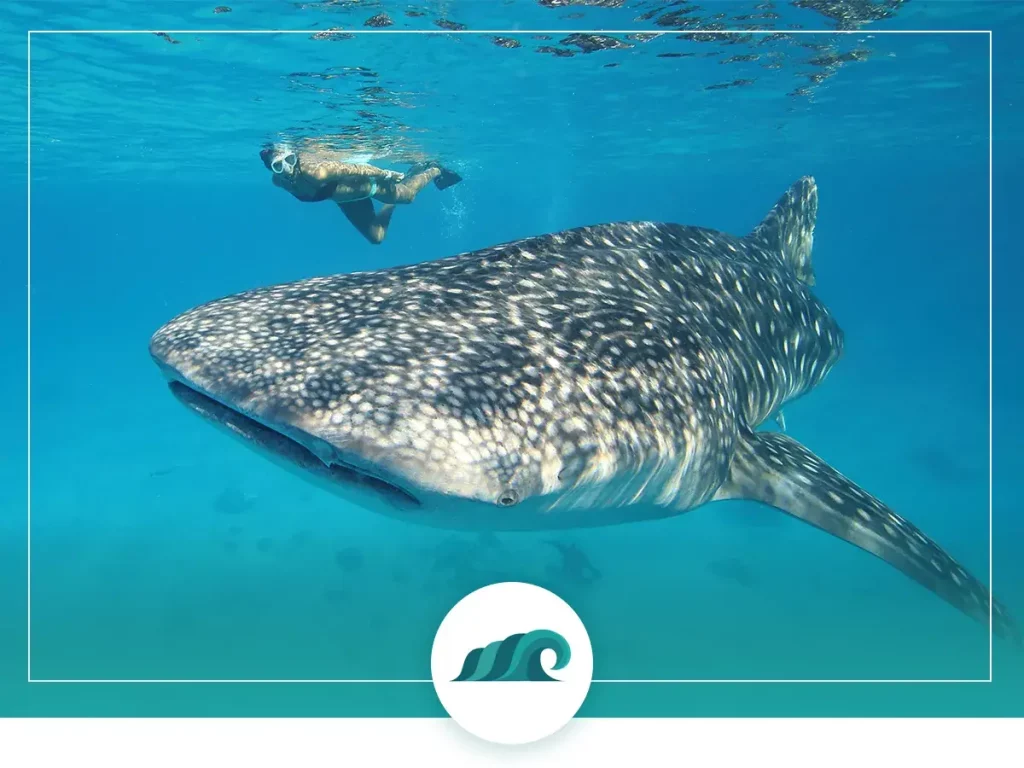
Many media sources portray all sharks as mindless, violent monsters, happily munching on anyone in the water. The vast majority of sharks aren’t aggressive, and the chance of being bitten by a shark is incredibly low, so most snorkelers will never see sharks when snorkeling.
You can help yourself stay safe by knowing what sharks you’re around. Many sharks are more aggressive than others, and knowing which will show territorial behavior can help understand what to avoid.
You can also use your knowledge to know if a shark is sizing you up for a bite or just curious about what you are. Some sharks, like Nurse sharks, are generally docile and avoid swimmers. Others, like Bull sharks, are highly aggressive and considered the most dangerous to humans, though even their attacks are rare.
Be sure to educate yourself before you jump into a shark’s home. Doing so can help you stay safe and make spotting a shark exciting instead of scary!
Safe Distance
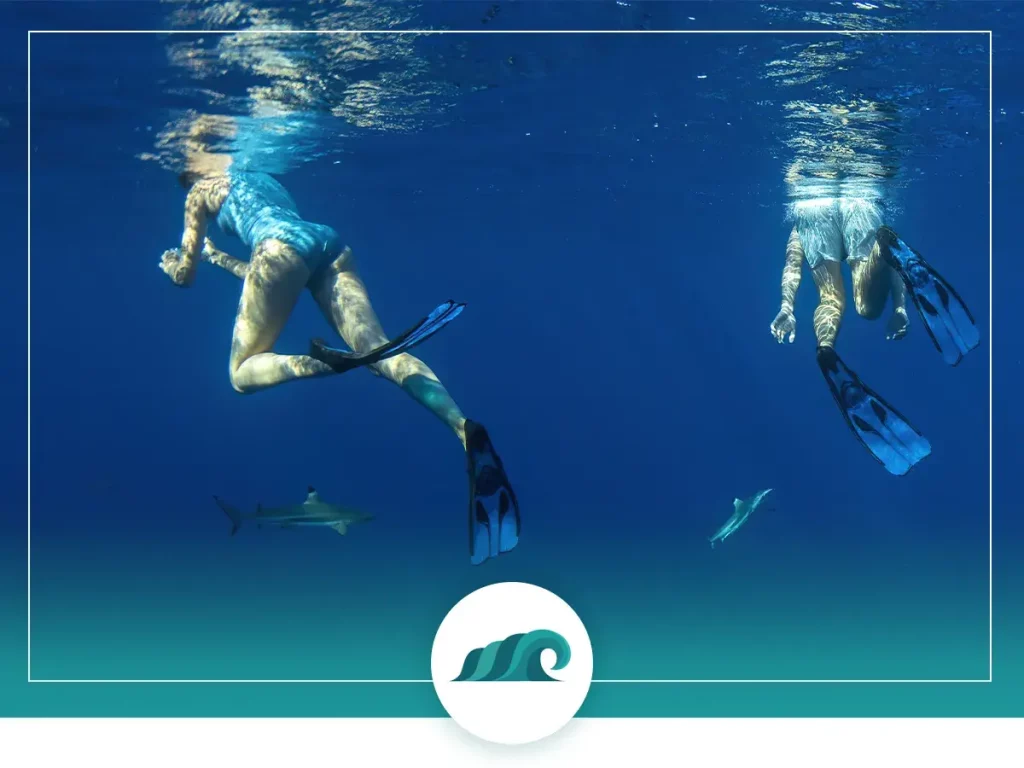
When wondering how to protect yourself from sharks when snorkeling, generally speaking, most sharks aren’t going to swim up near humans. The more aggressive types or larger ones, such as the classic Great White shark, are much less common on the shore, though they can are still spotted there.
If you see a shark, don’t approach it, even if you’re confident it won’t be hostile. Keeping a safe distance from a shark can stop it from seeing you as a threat or something interesting enough to chomp.
Don’t think keeping a few dozen feet back makes you completely safe. Sharks are swift swimmers who can burst with speed towards you if provoked. Leave the shark alone, and there’s a high chance it’ll also leave you alone, though you should still move somewhere else if you spot an aggressive species.
Familiarity With the Area

When you’re visiting somewhere new, you won’t have all the available information on the area. It may seem silly to need to familiarize yourself with the area you’ll be snorkeling, but there are countless benefits.
Knowing the area of safety around sharks can help you understand where they are more likely to be. A coral reef surrounded with fish and teeming with wildlife is likely to have them. A deep kelp forest can provide low visibility and make it difficult to see a shark.
Knowing the area will also let you see where you should go should something happen. In the rare case that a shark does bite you, you’ll need medical attention quickly. Know your route to safety in the water before you jump in!
Understand where you’ll be before you hop in the water. Doing so will keep you safe from wildlife and many other hazards.
Never Panic
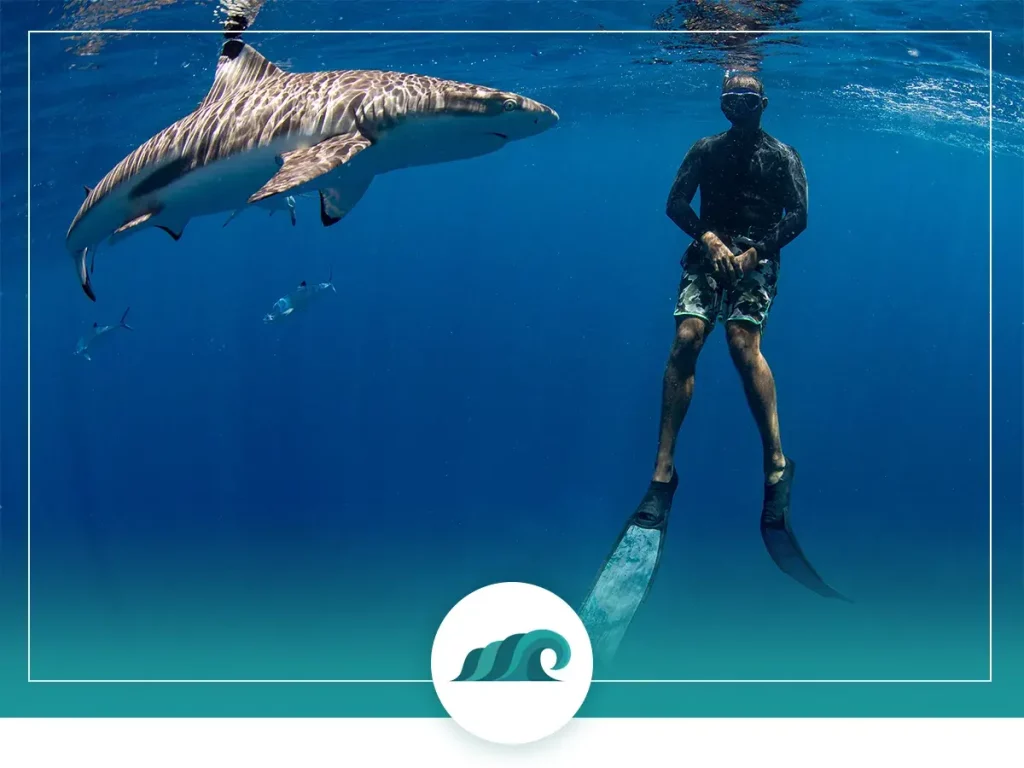
So, what do you do if you see a shark while snorkeling? Seeing a shark while you snorkel can be terrifying if you’re inexperienced. You may feel as if you’re seconds from being attacked and immediately try to get away.
Erratic behavior is more likely to attract a shark’s attention. While a shark paying attention to you doesn’t mean it’ll bite, it certainly raises the likelihood.
If you see a shark, you want to avoid the area and remain calm if you see a shark. Return to safety or your boat and relocate or wait for the shark to pass.
Move Slowly
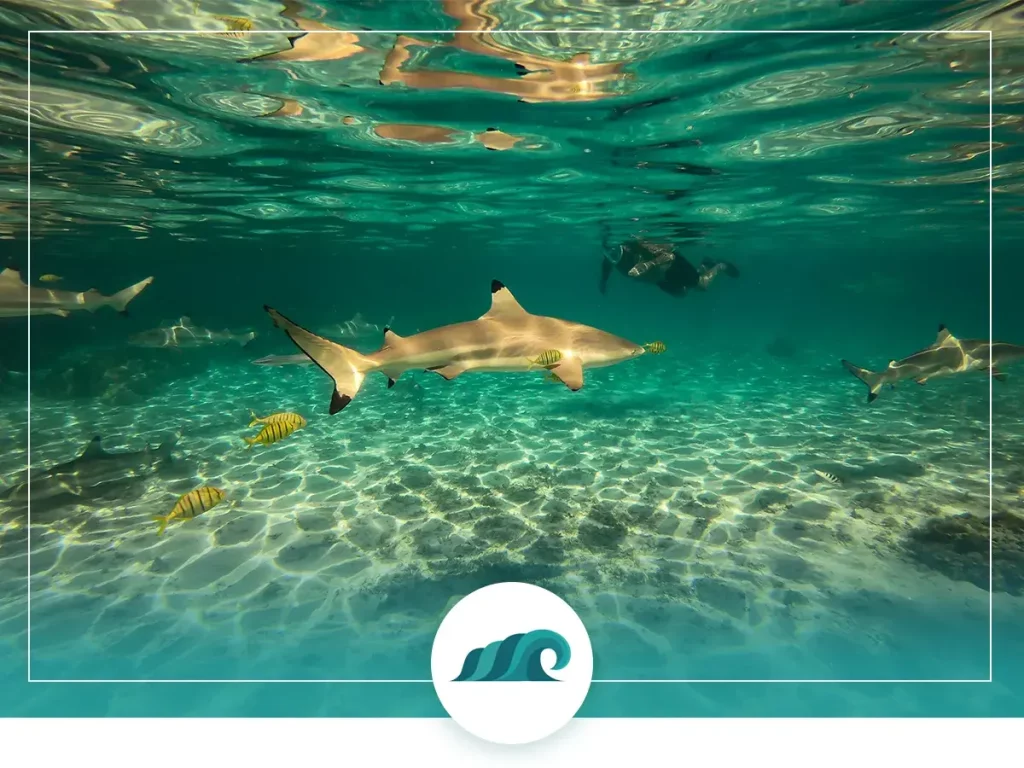
Moving carefully and calmly is the key if you’ve spotted a shark and want to get away from it. You won’t be outswimming a shark, so thrashing in the water towards your boat or shore is an awful idea. Doing so will only make you a more appealing, interesting thing to the shark and other ocean critters.
Instead, move slowly and calmly back to safety. If you’re already out of the water, feel free to move as fast as you’d like! But if you’re still within distance of a shark, you’ll need to move slowly and calmly to avoid attracting further attention.
Swimming Out
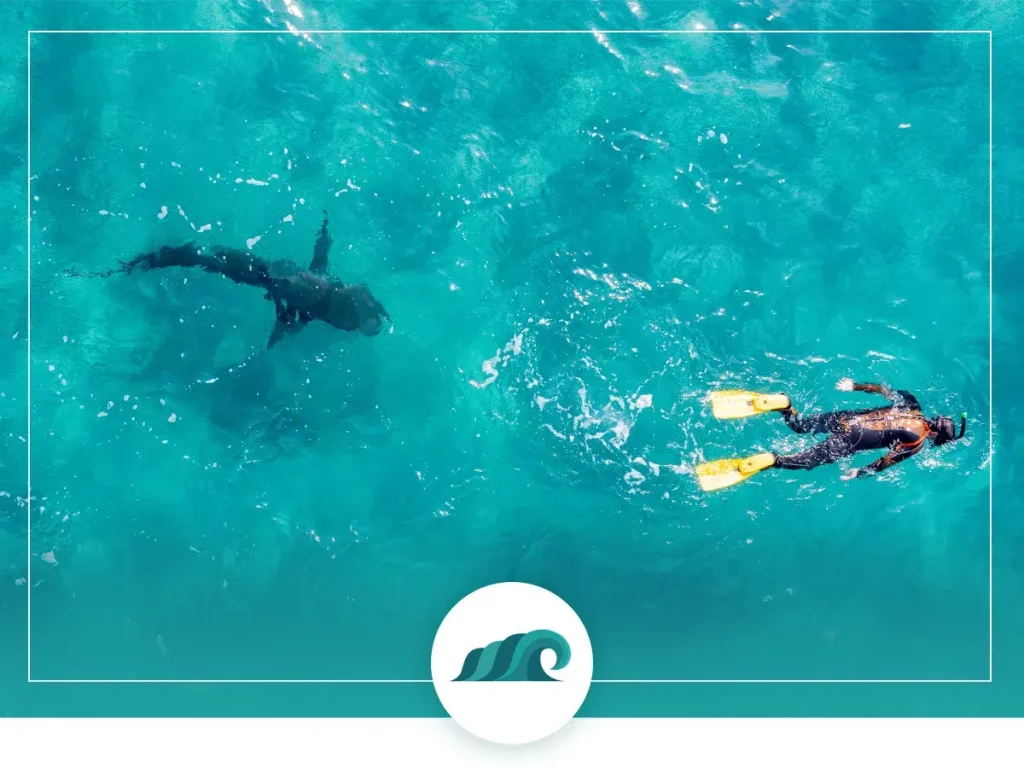
Sharks are intimidating creatures, and much of the media has convinced us they’re violent and vicious predators. While some are aggressive, the average shark isn’t interested in you, though some may give you a passing look. Stay calm and evacuate the area to move somewhere safer if you feel threatened.
If you’d like to learn more about how to safely snorkel, be sure to browse the rest of our website for more information!

